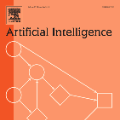The governance of frontier artificial intelligence (AI) systems--particularly those capable of catastrophic misuse or systemic failure--requires institutional structures that are robust, adaptive, and innovation-preserving. This paper proposes a novel framework for governing such high-stakes models through a three-tiered insurance architecture: (1) mandatory private liability insurance for frontier model developers; (2) an industry-administered risk pool to absorb recurring, non-catastrophic losses; and (3) federally backed reinsurance for tail-risk events. Drawing from historical precedents in nuclear energy (Price-Anderson), terrorism risk (TRIA), agricultural crop insurance, flood reinsurance, and medical malpractice, the proposal shows how the federal government can stabilize private AI insurance markets without resorting to brittle regulation or predictive licensing regimes. The structure aligns incentives between AI developers and downstream stakeholders, transforms safety practices into insurable standards, and enables modular oversight through adaptive eligibility criteria. By focusing on risk-transfer mechanisms rather than prescriptive rules, this framework seeks to render AI safety a structural feature of the innovation ecosystem itself--integrated into capital markets, not external to them. The paper concludes with a legal and administrative feasibility analysis, proposing avenues for statutory authorization and agency placement within existing federal structures.
翻译:暂无翻译




